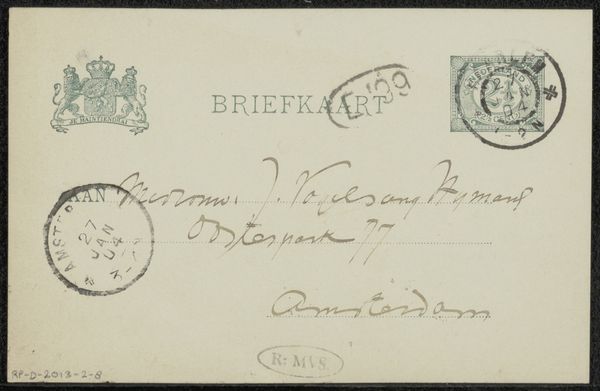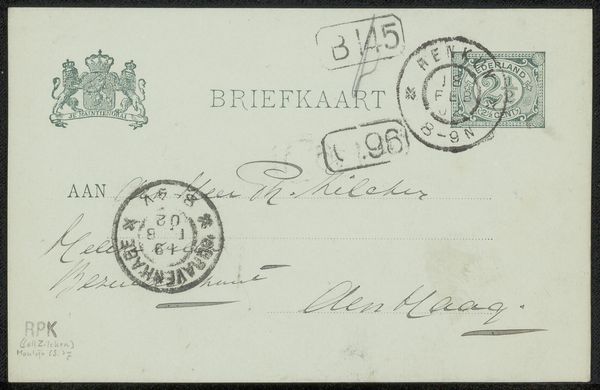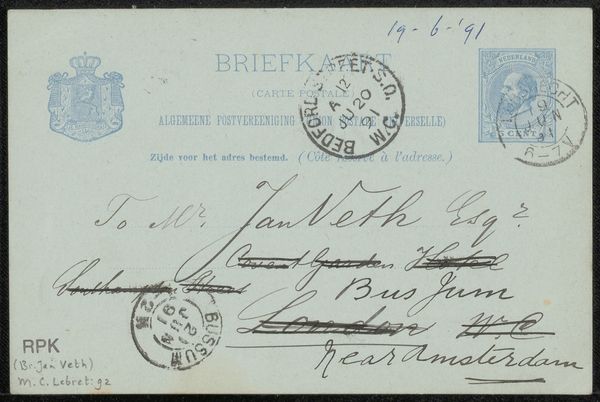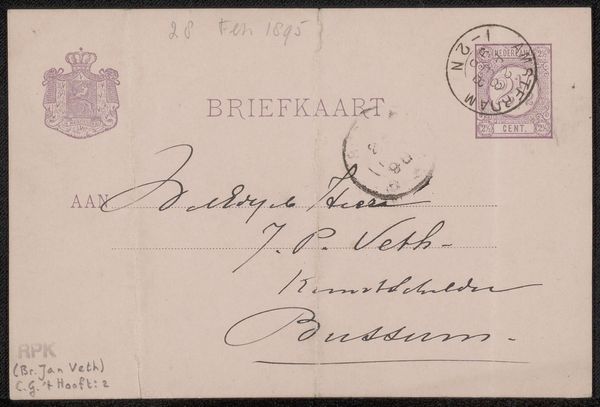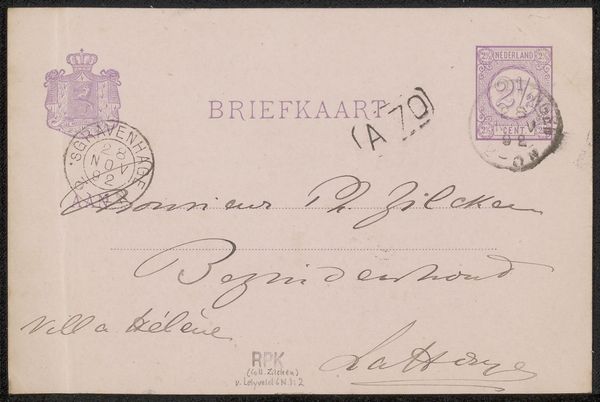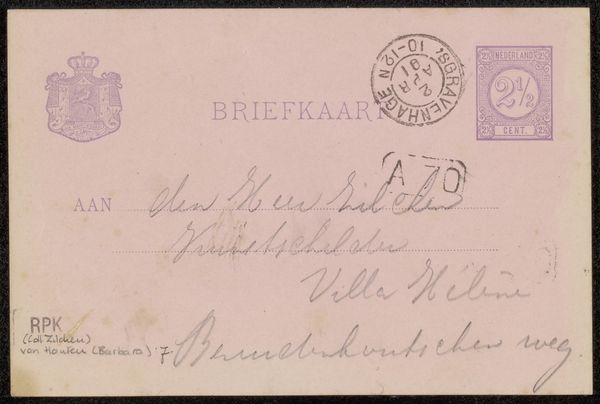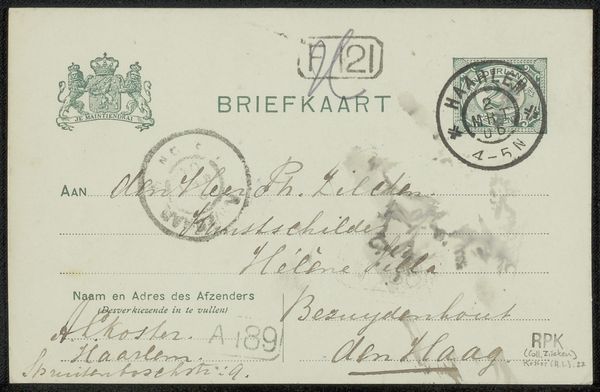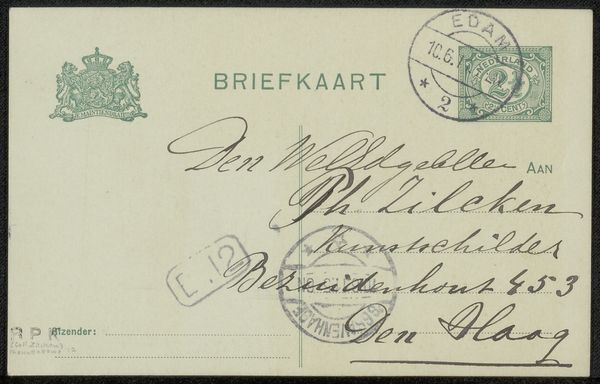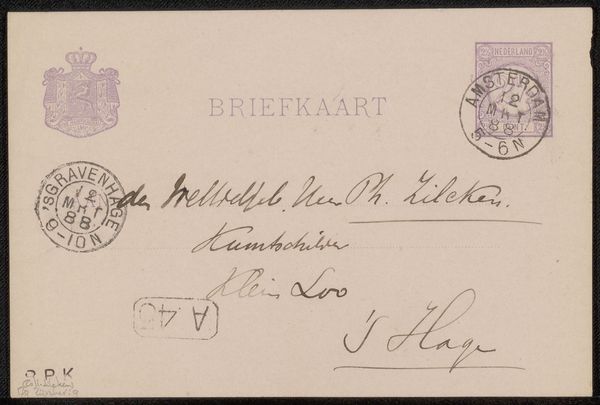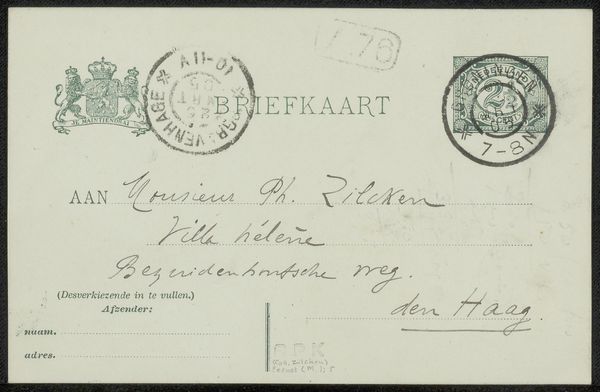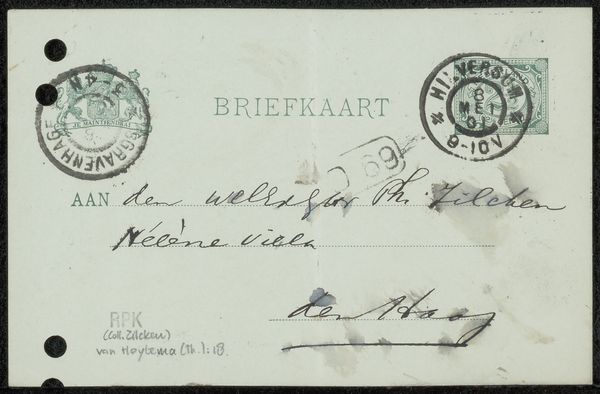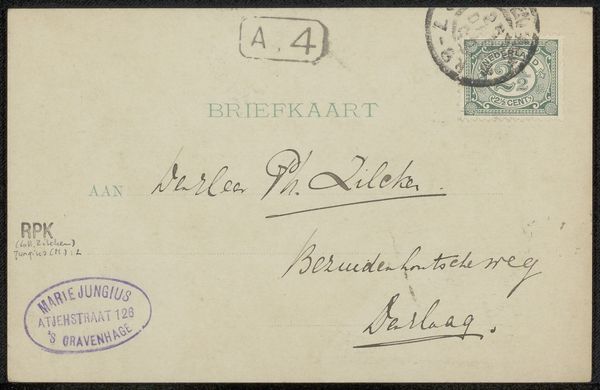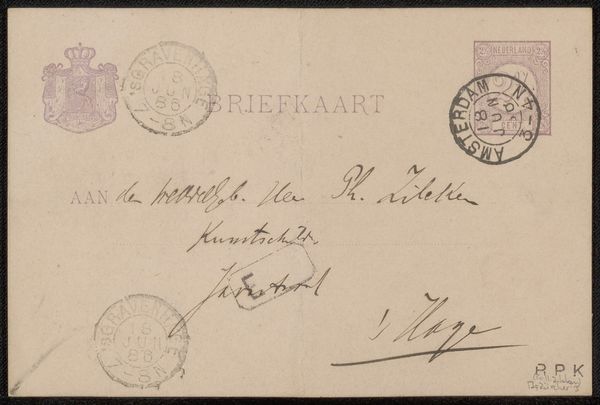
drawing, ink, pen
#
portrait
#
drawing
#
pen sketch
#
ink
#
pen
#
post-impressionism
Copyright: Rijks Museum: Open Domain
Editor: This is a drawing called "Briefkaart aan Jan Veth" which translates to Postcard to Jan Veth, possibly made between 1891 and 1896 by M.C. Lebret, using pen and ink. At first glance, it seems like a rather ordinary piece, a quickly jotted-down correspondence, but what strikes me is the layering of official postal markings against the personal script. What do you see in this piece? Curator: Precisely. We can begin by acknowledging that the inherent design is not primarily expressive. It is functional. Yet, by its presence within an artistic collection, the piece demands interpretation beyond mere correspondence. Observe the contrasting qualities: the crisp, printed text and official seals versus the cursive, flowing handwriting. Do you notice how the postmarks, while functional, also serve to create a sense of depth and visual texture? Editor: Yes, now that you mention it, the overlapping of the text and the stamps does create an unintentional layering effect, almost like a collage. Curator: Precisely. It is tempting to see the marks canceling portions of the text as something to obscure, but that also enhances particular compositional qualities by breaking up sections of what otherwise might feel quite blank. It introduces dynamism to the pictorial surface. Also consider the negative space: the vast white field of the card allows the deliberate marks and text to resonate and draw our attention to form itself. Does it strike you how the very means of sending a message affects the composition of what we see today? Editor: I never thought of it that way! It is almost as if the postal system unintentionally collaborated with the artist. I will never look at a postcard the same way. Curator: And indeed. By directing your observation in terms of pictorial construction, one appreciates that formal intention always resides alongside those which appear, on the surface, primary or even accidental.
Comments
No comments
Be the first to comment and join the conversation on the ultimate creative platform.
